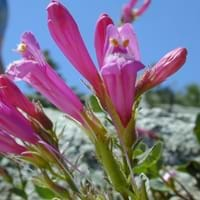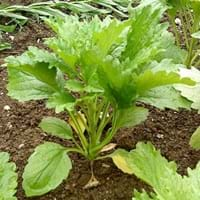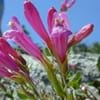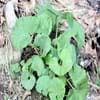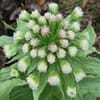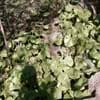Life Span
Perennial
Annual
Type
Shrub
Flowering Plants
Origin
Southwestern United States, Mexico
China
Types
Not Available
Ribbon series, Milady aster
Habitat
Wild
Cold Regions
USDA Hardiness Zone
8-10
3-9
Sunset Zone
10, 11, 12, 13
1a, 1b, 2a, 2b, 3a, 3b, 4, 5, 6, 7, 8, 9, 10, 11, 12, 13, 14, 15, 16, 17, 18, 19, 20, 21, 22, 23, 24
Habit
Clump-Forming
Upright/Erect
Flower Color
Hot Pink
White, Yellow, Purple, Pink, Rose, Crimson, Blue Violet
Flower Color Modifier
Bicolor
Bicolor
Fruit Color
Brown
Not Available
Leaf Color in Spring
Blue Green, Gray Green
Green
Leaf Color in Summer
Blue Green, Gray Green
Green
Leaf Color in Fall
Blue Green, Gray Green
Green
Leaf Color in Winter
Not Available
Light Green
Leaf Shape
Lance shaped
Arrowhead
Plant Season
Spring, Winter
Spring, Summer, Fall
Sunlight
Full Sun
Full Sun, Partial shade
Type of Soil
Sand
Loam, Sand
The pH of Soil
Neutral, Alkaline
Acidic, Neutral
Soil Drainage
Well drained
Well drained
Bloom Time
Early Spring, Spring, Late Spring, Late Winter
Early Summer, Summer, Late Summer, Early Fall, Fall, Late Fall
Tolerances
Not Available
Drought
Where to Plant?
Container, Ground
Container, Ground
How to Plant?
Seedlings
Seedlings
Plant Maintenance
Medium
Medium
Watering Requirements
occasional watering once established
Do Not over Water, Keep ground moist, Never Over-water, Requires a lot of watering, Requires regular watering
In Summer
Lots of watering
Lots of watering
In Spring
Moderate
Moderate
In Winter
Average Water
Alternate Days
Soil pH
Neutral, Alkaline
Slightly Acidic
Soil Type
Sand
Loamy, Well drained
Soil Drainage Capacity
Well drained
Loamy, Well drained
Sun Exposure
Full Sun
Full Sun
Pruning
Remove damaged leaves, Remove dead branches, Remove dead leaves
Cut or pinch the stems, Remove damaged leaves, Remove dead branches, Remove dead leaves
Fertilizers
All-Purpose Liquid Fertilizer
Compost, Well-rotted manure
Pests and Diseases
Red blotch
fungus
Plant Tolerance
Drought
Drought
Flower Petal Number
Single
Single, Double, Semi-Double
Foliage Texture
Medium
Medium
Foliage Sheen
Matte
Matte
Attracts
Hummingbirds
Not Available
Allergy
poisonous if ingested
Asthma
Aesthetic Uses
Borders, Showy Purposes
Beautification, Bouquets, Hanging Basket, Landscape Designing, Showy Purposes
Beauty Benefits
Not Available
Not Available
Environmental Uses
Air purification
Air purification, Food for insects, Versatility, Very little waste
Medicinal Uses
constipation, Stomach pain, Swelling, Wounds
Rheumatism
Part of Plant Used
Flowers, Leaves, Stem
Flowers
Other Uses
Showy Purposes, Used as Ornamental plant
Decoration Purposes, Employed in herbal medicine, Showy Purposes, Used as Ornamental plant
Used As Indoor Plant
Yes
Yes
Used As Outdoor Plant
Yes
Yes
Garden Design
Cutflower, Mixed Border, Rock Garden / Wall, Wildflower
Bedding Plant, Container, Cottage garden, Rock Garden, Showy Tree
Botanical Name
PENSTEMON parryi
CALLISTEPHUS chinensis
Common Name
Parry's Beardtongue
China Aster
In Hindi
penstemon parryi
चीन एस्टर
In German
penstemon parryi
China Aster
In French
penstemon parryi
Chine Aster
In Spanish
parryi penstemon
aster de China
In Greek
penstemon parryi
Κίνα Aster
In Portuguese
parryi penstemon
China Aster
In Polish
penstemon parryi
Chiny Aster
In Latin
Persicaria californicum
Sinis Aster
Phylum
Magnoliophyta
Magnoliophyta
Class
Magnoliopsida
Magnoliopsida
Family
Scrophulariaceae
Asteraceae
Genus
Penstemon
Callistephus
Clade
Angiosperms, Asterids, Eudicots
Angiosperms, Asterids, Eudicots
Tribe
Not Available
Astereae
Subfamily
Not Available
Asteroideae
Number of Species
Not Available
Importance of Penstemon Parryi and China Aster
Want to have the most appropriate plant for your garden? You might want to know the importance of Penstemon Parryi and China Aster. Basically, these two plants vary in many aspects. Compare Penstemon Parryi and China Aster as they differ in many characteristics such as their life, care, benefits, facts, etc. Every gardener must at least have the slightest clue about the plants he wants to plant in his garden. Compare their benefits, which differ in many ways like facts and uses. The medicinal use of Penstemon Parryi is constipation, Stomach pain, Swelling and Wounds whereas of China Aster is Rheumatism. Penstemon Parryi has beauty benefits as follows: Not Available while China Aster has beauty benefits as follows: Not Available.
Compare Facts of Penstemon Parryi vs China Aster
How to choose the best garden plant for your garden depending upon its facts? Here garden plant comparison will help you to solve this query. Compare the facts of Penstemon Parryi vs China Aster and know which one to choose. As garden plants have benefits and other uses, allergy is also a major drawback of plants for some people. Allergic reactions of Penstemon Parryi are poisonous if ingested whereas of China Aster have Asthma respectively. Having a fruit bearing plant in your garden can be a plus point of your garden. Penstemon Parryi has no showy fruits and China Aster has no showy fruits. Also Penstemon Parryi is not flowering and China Aster is not flowering . You can compare Penstemon Parryi and China Aster facts and facts of other plants too.
